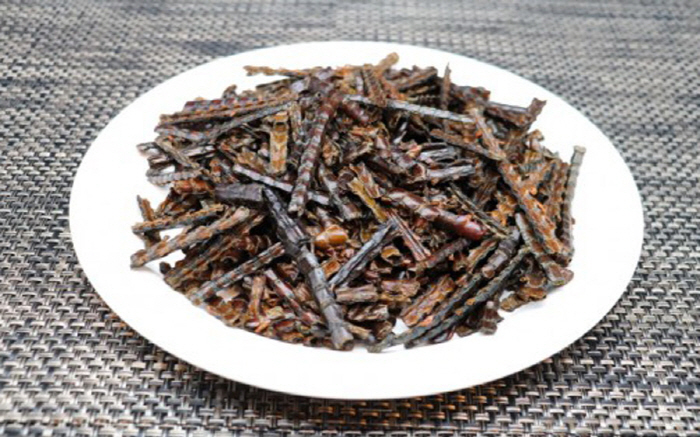Dried centipedes have excellent pain, anti-inflammatory, antibacterial, and antioxidant effects
|
The research team led by Lee Ye-seul of the institute analyzed the pharmacological effects and mechanisms of action of Okong, which have been used for a long time in the treatment of cramps, pain, and inflammation, using a scoping review method. Scoping review is a method of comprehensively collecting and organizing existing research results on a specific topic to understand overall research trends.
The study included 45 out of a total of 123 studies, excluding documents that did not meet or overlap with the criteria, and seven clinical guidelines for oriental medicine that mentioned treatments using Okong.
As a result of the study, it was confirmed that the herbal medicine ogong showed excellent effects in various fields such as pain, anti-inflammatory, antibacterial, and antioxidant. In particular, some ingredients have the same or higher effect as powerful painkillers such as morphine, but are less concerned about resistance or toxicity.
First of all, in terms of analgesic action, herbal medicine prescription using nongo was effective in relieving joint pain, controlling inflammatory response, and inhibiting osteoclast formation. The physiologically active molecule called 'peptide (SmTX-I)' derived from the ophthalmic venom showed strong analgesic action similar to morphine without causing side effects or resistance to narcotic analgesics, and in animal experiments that induced peripheral neuropathy, the ophthalmic acupuncture significantly suppressed allodynia. In addition, no side effects were observed while showing a similar level of effect with high-dose clonidine, a tranquilizer.
Regarding the anti-inflammatory effect, herbal medicine composites containing nongoong components have been shown to inhibit the protein complex 'nuclear factor kafabi (NF-κB)' signal, which plays a key role in inflammatory response and immune regulation, and lower the expression of inflammatory cytokines (protein immunomodulators secreted from immune cells) and inflammatory mediators (COX-2, iNOS). In fact, a representative Okong-based prescription herbal medicine, 'Ji Zhangshan', helped immune cell activity and reduced inflammatory substance levels.
In addition, peptides derived from Okong venom, 'Scolopin 1' and 'Scolopendin 2' showed strong antibacterial and antifungal activity. In addition, the ingredients contained in the ogong showed effects such as antioxidant and anti-thrombosis, anti-tumor, anti-fibrosis, and alleviating inflammation of the nervous system, suggesting the possibility of treating symptoms of traumatic nerve damage or degenerative diseases.
Lee Ye-seul, director of the Spinal Joint Research Institute at Jaseng Oriental Medicine Hospital, said, "This study is meaningful in that it confirmed the efficacy and safety of Okong's treatment as a traditional herbal medicine and herbal medicine, which has been used as a traditional herbal medicine. We look forward to continuing follow-up studies to expand the clinical application of Okong and confirm new possibilities, focusing on pain management in accordance with the Korean standard clinical practice guidelines in the future."
|
This article was translated by Naver AI translator.





